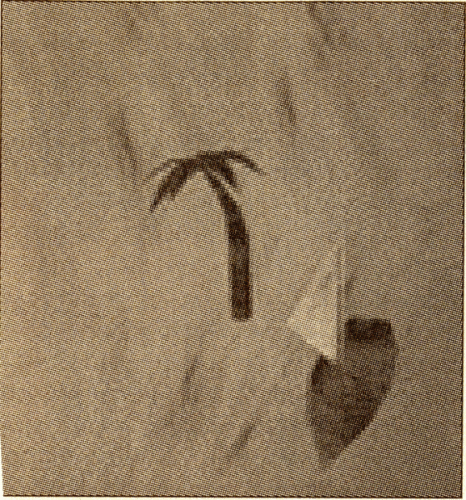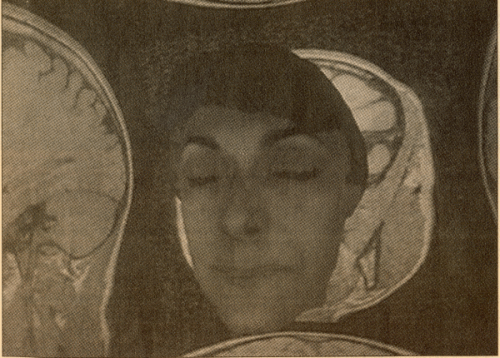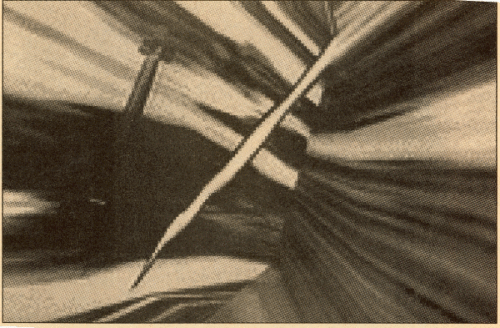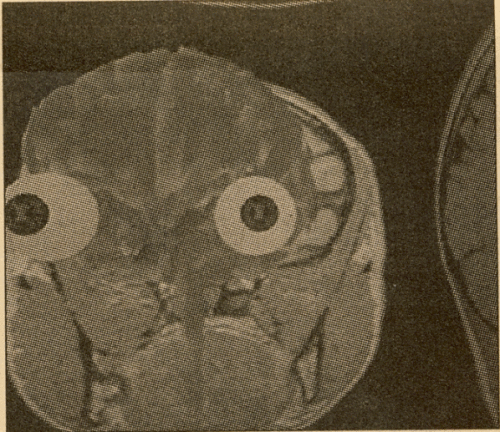V-Art
AESTHETICS AND TOOLS IN THE VIRTUAL ENVIRONMENT
In response to some of the issues raised in the Siggraph95 course 'Aesthetics and Tools in the Virtual Environment", Pauline van Mourik Broekman interviewed two of the four artists who participated: Perry Hoberman and Patrice Caire.
(all images are taken from Patrice Caire's Cyberheadproject)
In the panel "Aesthetics and Tools in the Virtual Environment" held at Siggraph this year, one of the interesting questions I thought you raised was to do with our emotional relationship to machines. Rather than the model of monogamy where use or possession of one excludes the other, you advocated something more flexible, perverse. What factors do you think determine this monogamous impulse?
Ownership and control are very seductive, especially as a kind of fetishistic barrier to an increasingly unruly world. People tend to think of their machines as servants or toys; both of these are relationships of possession. The whole thrust of late 20th century techno-ideology has been geared towards the promotion and packaging of consumer products, everything channeled towards the home, the family, or solitude. Between video, personal computers, video games, the Internet and commercial on-line services... we may never get out of the house again.
I think monogamy also comes out of the evolution of the personal computer as a typewriter with a TV screen, a mere tool. It's much harder to make a typewriter for a crowd, and yet this is the very thing that becomes possible with digital technology.

You also seemed to want to expand this fluidity into our perception of the "evolution" of machines. In your installation, "Faraday's Garden", a whole gamut of machines was presented, silently waiting for the viewer's steps to trigger their functionality, make them whisk, grind or illuminate. No one form or device superceded the other, no matter how obsolete or defunct in techno-historical terms. Is this a reminder, "Out of sight, out of mind....
Faraday's Garden was (among other things) an attempt to re-animate the dead. Of course the undead need the living (otherwise there's not much point in returning from the beyond). So you end up with an intensely symbiotic relationship between the installation and the audience. As the leading edge of technology rushes forward at ever-increasing speed, everything else is treated as unevolved, useless trash, which can only lead to the inevitable revenge of the obsolete.
Perhaps it's due to technical constraints, but a lot of VR artwork seems very a-historical in terms of its position within the history of visual representation. Do you feel it gets separated too much, due to its distinct nature, or not enough?
Also, there seems to be some linkage Maybe, there between that and an interpretation of VR as a new (or alternatively, archaic but resurfacing), non-verbal medium for communication. A conductor for a more holistic paradigm?
I think that the difficulty of locating VR anywhere in art history stems partly from the breathless rhetoric that usually accompanies it. VR is often posited as something separate from the machines (usually very expensive machines) that make it possible. There's the notion that we're going to strap ourselves into some elaborate rig, and then quickly forget all about it as we experience an absolutely pure -ethereal world.(As though VR doesn't require any suspension of disbelief at all!) I think we've barely begun to develop even a syntax for VR, largely due to inane concepts like "post-symbolic representation". So I don't know that VR is much of a means of communication between people as of yet. There's the notion that subtlety of communication increases with higher bandwidth. That is, a picture-phone would be better than a telephone, and networked VR would be the ultimate. But this doesn't seem to be true. Increased bandwidth leads first of all to sensory overload, which can be thrilling but hardly conducive to effective communication. But I don't think art is really about communication anyway.

And then VR is also often interpreted as being more in keeping with a "feminine" understanding and negotiation of space. How do you feel that the different definitions of Virtual Reality structure these descriptions? Phones, computer terminals, games, datasuits...
Maybe, as long as "feminine" stays in quotes. There's an element of open-endedness to VR, which could be seen as more "feminine" (I'm not sure, really). Surfaces are permeable, gravity is optional, space is endless, etc. While there are of course many examples of rigidly structured VR (goal-oriented games, restricted "tours"), these could be seen as attempts to mask the current shortcomings of VR technology. But I certainly don't think we're going to be leaving our bodies behind, male or female.
Currently one of the things lacking from many games, VR experiences and areas of the internet is a possibility for generating communal experiences and interaction. In your work Barcode hotel, you had a kind of prodding, playful and absurdly unfunctional interaction set up between people via the things they could do to their chosen objects. Was this a prime concern of the piece?
Yes, absolutely. The real challenge is in making something that is flexible enough to be used by any number of people. One of the rationales of making work "interactive" is to make it intelligent enough to adjust to changing circumstances. And "intelligent" here doesn't mean AI, it just means thinking through how people are actually going to experience and use the work.
How do you feel about the current use of genetic algorithms in art. AL is rapidly becoming a very popular way of exploring the human - machine - machine - machine - machine interface. Is it really showing us a reality we're too conditioned to face up to, as is often said?
While there's nothing inherently wrong with a hands-off approach to artmaking (just program the machine and let it crank), it often seems to lead to a kind of neutral position where the artist ends up a mere observer, a kind of naturalist.

Your project The Cathartic User Interface; tell me how it's going and are you going to franchise the concept so we can all enjoy its benefits?
Cathartic User Interface 1.0, which is a project by Nick Philip and myself, is up and running at the Blasthaus Gallery in San Francisco. It seems to be a great success. It turns out that the ideal way to control a computer is by hurling an object as hard as you can at it. This allows you to step back from the machine (incidentally protecting yourself from harmful radiation), creating an unprecedented "multi-muscular" (kin) aesthetics. Nick and I are planning to push the concept further, and are in fact going to develop a "personal" version of CUI, which hopefully will provide some relief to countless frustrated and depressed mouse jockies.
PATRICE CAIRE
One of the main aims with Cyberhead was to include and model "real data" (in this case Magnetic Resonance Imaging data of the brain/head) into the virtual environments you created. Why do you feel it was important to juxtapose this with the modeled, synthetic reality you chose to create?
0 I created a fiction based on real data. My goal was to make a set up with which people could identify, i.e. a human head. It could be theirs or their friends/ relatives/ enemies... The point was to make a seemless trip between people's actual reality at the time they entered the VR world and the fictional reality through which they would be travelling. To close it in a similar manner, as if they had been in an other world : a pocket of non-communication.
One of the most conspicuous aspects of artists' VR projects is the fact that they are, by necessity, collaborative. Do these projects become collaborative in the full sense or do you think they usually conform more to the film-production model of director and production team where the artist's output becomes a bit like that of a film studio with the attendant financial and staff management taken over by the artist?
This is a very difficult issue because of the hierarchical structure of our society. The way I work with people though is to allow everybody to participate fully and as early on as possible in the project I am working on. I consider creativity as a part of every profession, be it engineering, programming, creating concept, designing 3-D models, creating animation, drawing characters or objects, chip design or plumbing, tennis playing ... It is HOW each person works and thinks which makes a difference not what they do.
That being said, the bigger the team, the harder true collaboration becomes. And when financial issues arise it often becomes more difficult. Moreover, issues like copyrights, reproduction, responsibility ... become very complex.
In the panel you seemed quite decisive that, for artists to really tackle new technologies, including VR, they need to become fully conversant in the areas of programming and the use of high end equipment and software; has your ability to programme affected your ideas significantly or has it just made it easier to get them across?
I don't mean high, actually desktops and midranges are of easier access and less time consuming, so in that sense are better. I do think that you have to know your tools, whatever you choose to do. I always insist upon a tight interaction between conceptual work and concrete experiments. They feed each other in a very rich manner when they are so completely intertwined. Every new technic and technology I learn and use expands my vocabulary and therefore enriches my thinking.
In Cyberhead, you state you wanted users "to consider the relationship between biological existence and thought". What strands of mental and biological activity did you seek to represent by e.g. the Disney-like hands, the violin or the branch, boat and palm tree - or do you think of their role as less illustrative than that?
These 3-D objects were really there to allow the user to associate as broadly as possible with his or her own experience. Like sound, cartoons, other states, like being on a boat, other horizons. They are connoted trempolins. For a public in Africa or Alaska or whatever they should be different,just more appropriate to a kind of common cultural receptacles. They are symbols.

One of the challenges you mention is the problem of presenting data that is difficult to represent. Perception, cognition, the brain's reception of ambient environmental imput; sound, light, physical pressure etc. There seems to be something quite paradoxical about using VR for this as it still, even by default, places an onus on a kind of visual and virtual plasticity. Did you find this helpful or frustrating?
This is a new land and it is nice to run in it. You make your own rules. That's why you have to know what you are working with otherwise you end up using old models that are totally inappropriate. I am interested in programming as a tool and most importantly in algorithms design as a grammar.
Being concerned with the body's negotiation of space and our understanding of space generally, how did you investigate these areas before? Did you always explore the interface of the virtual and actual and if so, how?
My work is to create systems and in the past it has taken different forms, one being to create large installations mostly exhibited in museums. I also have worked a lot with semiology, and my work has always has a strong conceptual framework linked to the concrete design of models. I believe that reality, our physical reality, is developed by our bodily movements.
As with games, the narrative possibilities of VR are distinctly different from linear media. How do you approach this aspect of a piece. Do you concentrate on the environment, letting users "free fly", or do you employ narrative devices?
This is also a difficult issue as you want the user to have an idea of what is going on. The learning curve is very sharp so I give a bit of guidance and allow the users to take off by themselves as much as possible. At this point of our computing abilities, it is still limiting anyway.
Does this pose any technical problems or does it facilitate things by structuring the space?
Indeed, and they are tremendous. I want to create VR environments which are very rich, meaning you need a lot of different technologies. Each of them is developed separately by different companies and no one makes them work together. You are always a beta test in some ways and that is difficult when you have specific deadlines. In that sense, my work is to integrate, as many ways for us to expand our senses, perceptions, intelligence. Some of the new technologies I am referring to are haptic and force feedback, elaborate speech recognition, 3-D sound, good and fast rendering, high resolution of stereoscopic images and 3-D models and animations based on real data as well as constructed from scratch.
I've heard you ride motorbikes. Any comments on SPEED? (not the film, don't worry!)
I have a very strong interest in speed, not so much speed as a way to go faster from A to B, but as a completely different way of conceptualising things. I used to race on Japanese bikes for speed racing - mostly Yamaha 1000 cc, i.e. very powerful engines and very fast - for GP (grand prix) in super bike and super sport category.
Siggraph VR panel and general information: http://www.xian.com/panel.html
Mute Books Orders
For Mute Books distribution contact Anagram Books
contact@anagrambooks.com
For online purchases visit anagrambooks.com






